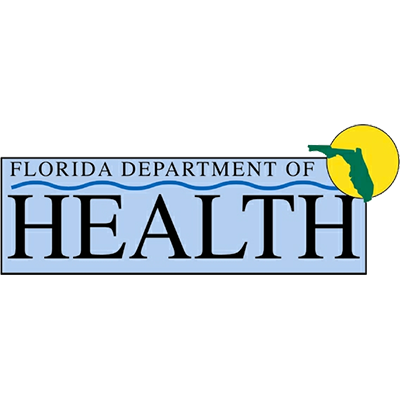Links to other resources: Residential Treatment, Detox, Stress and Alcoholism
It has been a few months since we discussed access and barriers to care on this blog, but it is a theme we will always return to, because lack of treatment capacity and barriers to treatment are fundamental areas where we are failing to improve in this country right now. Barriers to care are numerous and fixing many of those requires fundamental shifts in the ways some people think about addiction disease. Treatment capacity, however, is more straightforward in many ways. One set of arguments for increasing Medicaid treatment capacity for patients who are suffering from drug and alcohol addiction disorders come down to three simple economic facts which we will cover in this article. The basics of the argument involve the growing demand for addiction treatment capacity across the board, the unwillingness of private companies to help provide more supply of treatment options, and the cost/benefit analysis of treating people for substance use disorder. Before we begin, if you or a loved one needs the best drug and alcohol rehab in Florida, call our facility in Panama City today.
The Growing Demand
All three of these economic arguments are simple, but in some ways the demand side of things may be the most straightforward. During the Covid-19 pandemic we have seen huge increases in the number of people who are overdosing and dying from various drugs, and we have seen increases in alcohol related deaths and diseases. Some experts, including myself, had been surprised that some of these numbers had actually been slightly declining in 2019, but the global pandemic wiped out any strides we may have thought we were making. The last 5 years have also been the time period when fentanyl solidified itself on our city and rural streets and has led to a deadlier opioid epidemic than ever before. Alcoholism and depression were worsened by the stress and uncertainty that Covid-19 brought to people’s lives, and early lockdowns during the pandemic worsened things for many people already facing mental health challenges. With these new realities, we have a greatly increased need for treatment capacity of every kind. Medicaid patients make up a huge percentage of people who need substance abuse treatment, and there are various reasons for that, but the huge increases in demand while Covid-19 was straining our resources to treat non-Covid disease has left our healthcare system lacking resources in general. To make matters worse, we were largely failing to meet demand for Medicaid patients before the pandemic, and we will talk more about the reasons for that in the next section.
Unwillingness of the Private Sector to Increase Supply
Florida Springs Wellness and Recovery Center, the best drug and alcohol rehab in Florida and the facility I write for, is not only the best treatment center in Panama City. Unfortunately, we are the only drug and alcohol rehab in our area of Florida that consistently excepts Medicaid patients and has open beds for those patients. The willingness to provide services to Medicaid patients is one thing, and the vast majority (likely over 90%) of the best drug and alcohol rehab centers will not provide services to Medicaid patients at all. This causes obvious and serious problems when a huge proportion of people with substance use disorder rely on their government provided insurance coverage. The best drug and alcohol rehabs also often provide the best chance for patients to achieve a successful recovery and stay sober from alcohol and drugs, so Medicaid patients who are somehow able to find treatment are often left with being treated at facilities with lesser track records. The owners and directors of Florida Springs in Panama City have made a conscious decision to continue treating Medicaid patients at our facility and the owners will make slightly less money in the long term for making that choice. It is clear that most owners and directors of treatment centers in Florida and around the country are not willing to make that same sacrifice, so the current system will likely never result in enough Medicaid treatment capacity to help all of the people who are looking for a path to sobriety and happiness.
Cost/Benefits of Recovery Treatment
Another simple economic reality in the drug and alcohol rehab field is that patients who do not receive proper treatment when it becomes necessary will not simply go away. People with substance use disorder require serious treatment, and untreated drug and alcohol addiction leads to death and other serious complications that will ultimately have a much higher economic and social cost. In just the last few years we have seen over 300,000 drug and alcohol related deaths in the United States. If you combine those staggering numbers with the countless people who are suffering ongoing debilitating health problems from addiction, you begin to see the harm being created by the ongoing drug and alcohol abuse epidemics. The most common situation to use as an example here would be the person with drug or alcohol use disorder who is not able to find an open rehab bed that will take a Medicaid patient, which is an everyday occurrence for thousands of people. The patient will soon end up in the emergency room or admitted to hospitals over and over again, racking up huge amounts of money in hospital bills, much of which would likely have been avoided if they had found a spot in a rehab facility. That is often the case if they choose to try to go cold turkey and get sober on their own, but when that fails and they return to drug and alcohol abuse because of not finding a suitable rehab facility, then the result is possible death and even more serious complications beyond a few stints in emergency rooms. Untreated drug and alcohol use disorder results in hundreds of different diseases, many that can cost us over 100,000 dollars a year, when a simple 30-day rehab stay could have been covered by Medicaid insurance for 6,500 dollars in total. A small price to pay when a human being’s life and happiness hangs in the balance. That is just one common set of occurrences when a single person is unable to find Medicaid addiction treatment, and this process will repeat itself in the lives of thousands of people until we take the necessary steps to meet Medicaid treatment demand with the proper amount of care and compassion for all of those needing help.
By T.A. Cannon




